New
Jun 22, 2017 8:59 AM
#1
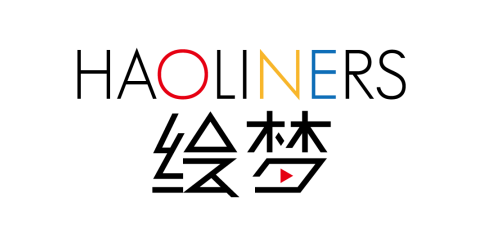 In October 2015, Shanghai-based animation production brand Haoliners Animation League opened an office in the Kichijoji suburb of Tokyo. The production studio named Emon is Japan's first animation studio established by a Chinese investor. In February 2017, MyAnimeList met with Widad Noureddine, Emon's general manager of international media operations, in Kichijoji as part of a feature story on Chinese animation. This is a transcript of that meeting. 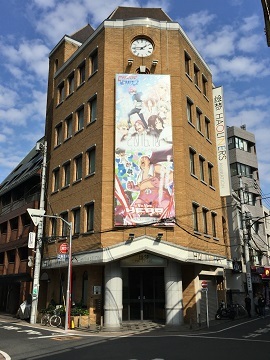 How did you come to start working at Haoliners? How did you come to start working at Haoliners?I came back to Japan around the same time of the starting of Emon Tokyo in October 2015, and I met [former Gonzo producer] Shouji Murahama. At that time, I told him I used to work in the anime industry in France. He told me they had just started the studio, and that if I was interested I was invited to work with them. I thought it was a good opportunity, so I accepted. I was always interested in working in the anime industry in Japan. What kind of work were you involved with in France? I used to work in sales of anime DVD and Blu-ray, as well as manga, with a company that used to work with Bandai Visual. The French anime market is kind of complicated right now because, like everywhere else, DVD and Blu-ray sales are not as big as they used to be. Because a lot of people now consume animation through digital streaming, sales of DVD and Blu-ray have become difficult. Is that trend in consumption generally the same elsewhere overseas? We can see that it's also kind of difficult in other countries, whether it's the United States, Italy, or even Japan. Germany is the only market that is doing well in DVDs and Blu-rays. Their market is similar to Japan. Japanese publishers will put one or two episodes in one disc, so if you have a long series, you could end up with 20 discs. The German market is like that because they don't put too many episodes in one DVD. This is contrary to the French and American markets, where they try to put everything in one package. People don't want to buy one disc at a time. They want everything at once, so you have one or two packs for a 24-episode series. What differences or similarities do you see between the animation industry in Japan and in France or Europe? What I can actually see right now is that the market is shifting. If I have to compare with the French one, I wouldn't be able to compare because in France we just buy and sell [anime titles]. In Japan, they mainly produce, so the two markets are different. The French market depends on what's happening in Japan. With Chinese involvement, that's the big shift in this industry in Japan right now. What are some of the examples of Chinese involvement in the industry? Our company, Emon Haoliners, is the biggest example I can give you. Nobody in China had ever created a studio in Japan. That means we are the first one. We knew for a long time that Japanese studios used to create some titles in China through outsourced production, but Chinese people investing in Japan and doing everything in Japan is like the complete opposite. Right now, China has become strong enough to produce their own content in Japan. Do you think that's a shift driven by producers, or is it a demand by customers for Chinese companies to invest in Japan? I think there is demand from the Chinese side. Our company is working with Tencent, a major leader in the Internet industry in China. Tencent has a big catalog of webcomics which are very popular, and they would love to see these works adapted into animation. If you want anime, you have to produce it in Japan. Creating Emon Haoliners in Japan means having your works being animated by Japanese staff so that people will recognize them as a great works. Japanese people are very happy about that because the industry is not doing so great. We have a lack of animators, so if people come and give funding to projects, there's work available. That's a good thing for the Japanese industry to have people coming and investing money in anime projects. 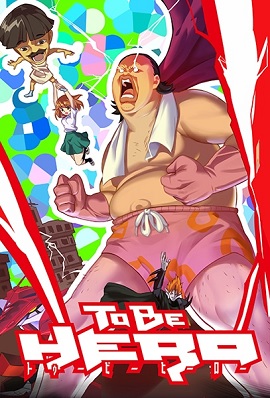 What do you think is the ratio of the work done between Emon Tokyo and Emon China? What do you think is the ratio of the work done between Emon Tokyo and Emon China?That really depends on the anime. Some of our titles are 100 percent made in Japan, like Cheating Craft and both parts of Reikenzan. Others, like Bloodivores and Hitori no Shita: The Outcast, are made in Japan mainly but also co-produced with Korean studios. We also can't say our works are 100 percent Chinese. Right now, the only 100 percent Chinese product is To Be Hero, which is created by Li Haolin at Emon China. We do not say that all our works are done in China because that is not true. Some of them are done here [in Japan]. We have studios not only in China, but also in Japan and South Korea. Our goal is to work with all these studios together so that our work helps our company's employees and studios together. Between your studios in South Korea and Japan, which one is bigger? We don't do the same things [in both locations]. Here in Japan, we produce, but we also prepare everything else like business project and business development. The South Korea studio is more like a production studio, so they will only do the drawing and related tasks. Here in Japan we have the digital department for CG production, traditional anime production, strategy and business development, as well as our figurine company Emon Toys. Each studio has different plans. Is there anything unique that Emon Tokyo has that other Japanese animation studios may not have? What's unique is that Emon Tokyo works fully with Japanese and Chinese staff. Coordination with our office in Shanghai and Japan is easily handled. Here, most of the staff are Japanese, so our production are mainly made by Japanese artists. We have a great team working on this, and our people have a lot of experience in animation. It's also good that a lot of people are coming in and working to help us on our projects. We work just like any other studio in Japan and also work with staff from other studios. You recruited people from other studios? Of course. As you probably know, the industry now doesn't operate with people working in one place and not moving. People go and work with a lot of studios at once; many are freelancers. When they can help on one project, they go there. When they have another project, they switch over to that project. There are a lot of people coming and going back to other projects. We also have a lot of projects going on right now. This year, we have more than ten projects underway under the Emon Haoliners brand. We cannot produce ten works in only one studio. We don't have enough people to do that, and I don't think that's possible. Our works are not done by Emon only. We work with other Japanese studios who help us produce and make them. What are some of examples of the differences between Chinese and Japanese production culture? It's just small stuff, but Chinese people use hanzi characters for example. When translating into Japanese, the translated name may not have the same meaning. Sometimes you just have to change the kanji in Japanese, but it's very different for the overseas market. You have to adapt everything [for overseas audience], so the title and [character] names may change. Sometimes you have to figure out how to make everything go smoothly. It's very challenging because you have to check the aspects of the original work to make sure the meaning is not lost. Most of these works are coming from light novels or webcomics. In the legal area, dealing with a work of Chinese creation in China is not handled the same way as it is in Japan. Matters related to rights and licensing are discussed a lot. 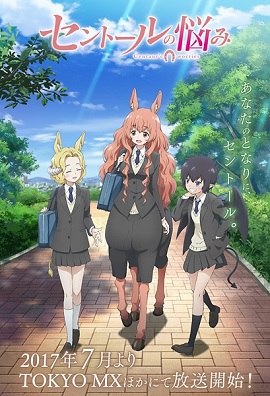 When adapting webcomics or light novels, is there cooperation with creators in China similar to how it is done in Japan? When adapting webcomics or light novels, is there cooperation with creators in China similar to how it is done in Japan?Yes. Although we handle light novels and manhua from China, we also adapt Japanese video games and manga. [The process] depends on who is in charge [of the original work]. For example, if the original work is a Shueisha or Kadokawa manga, we just do it the same way because Japanese people in our company produce it in the same way as those companies. It's not necessarily easier just because the two parties are Japanese, but the process is done in a more traditional way. With Chinese works, everything is handled by our company in China. They take care of the rights and the adaptation, and then when everything is settled they just give us what we have to do and what we can do to adapt this work or manga. We'll go back and forth to see whether we can produce some parts a certain way. They'll come back with changes and make other recommendations. Sometimes there's a language barrier. Chinese people work in Chinese, and we work in Japanese. We're able to work together now, but at first it was really challenging because Japanese people are not used to working with Chinese people. Today, our communication is very efficient because we have Chinese and Japanese creators working side by side in our Tokyo office as well as our Chinese office. What has been the most fun experience? The fun part is that I can see how the Japanese anime market is evolving. Most people know the anime market is not doing great, but foreign investment in the anime market is helping a lot of studios. We're seeing the whole market shift. People used to consider Japan as the top creator of animation, but what I see right now is that China has a lot of potential. I consider it like the new El Dorado of animation because a lot of great animators are right now working in China. I'm very happy to be in the company because I always wanted to see how foreign companies animate their works in Japan. Some time ago in France, there was one company called Ankama who tried doing that. They did the same thing, but at the time it didn't work. It's very challenging for foreign companies to come and invest in the Japanese market and try to animate their own works. Tencent now has their own catalog, so a lot of people in China want to have their famous Chinese comics animated. Having people do that here and making it real is a very good thing. It's something that I really appreciate. What experiences have been the most challenging? The most challenging thing is dealing with the image that Chinese people only copy. People still think that things that are not produced in Japan are not anime. Of course, all our anime are mainly produced in Japan. It's also true that the origin of the works is not Japanese, but they are animated by Japanese people, in the Japanese way, at a Japanese studio. I think people who say generally that China is not good is kind of restricted. That could mean if one day an American, French, or other person wants to create something in Japan, nobody will recognize that work even if it's made by Japanese people. Right now we should be more happy that other people are doing more stuff. They should be proud that there are people who can do something that's different from the Japanese. Just because it's different, it doesn't mean that it won't be good. It also doesn't mean that because it's different, it will be good. We should give them a chance. There is anime for many kinds of people. You may not like it, but there are others who will. We should be more open with other works. What do you think are the genres that are more popular in the Chinese market? The Japanese and Chinese markets are not very similar in this regard. The Taiwanese market is the one that is more similar to the Japan market because they also like the moe genres and other things that are popular in Japan. The Chinese market is more like a shounen market. Shounen and action titles are very popular there. In this regard, it's similar to the continental European market. Sure, they may have similar interests in titles like Gundam, but works like Naruto and One Piece are very popular. That's why Chinese webcomics are mostly action-based. 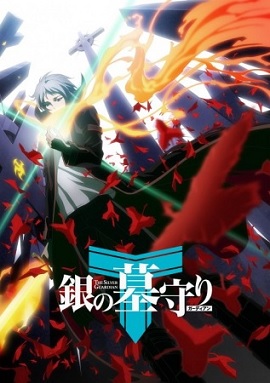 What's the unique thing about a work like Gin no Guardian? What's the unique thing about a work like Gin no Guardian?The thing that is interesting about Gin no Guardian is that the main character is not the hero. He's the like the last boss of the game, and all the players have to beat him. That's something I haven't seen before. Usually the hero is the main protagonist, and they have to beat the boss. Are there things that had to be changed in Gin no Guardian when adapting it for the overseas market? Yes, we had to adapt some things in Gin no Guardian because it's not possible to present the work in its original form. In order to make it into a 12-episode series, we had to change some content to make the anime go smoothly. That's where the Japanese expertise comes in. They can see which part is interesting and which part is not necessary. The Chinese side may also say they actually want the unnecessary part, so we do try to find a compromise between the two. We also have to deal with references. For example, in anime and manga, when you make references to other works, you have to have the rights, so we had to make some changes. Is it common for Chinese works to reference each other? Yeah. They really do that often because that's something they like. Most of the creators are anime and manga fans. Of course, putting stuff from things they like is like giving an homage. You can often find often those kinds of references in Chinese works. For example, you will find other characters from works by Haoliners in Spiritpact. When you market works from Haoliners, is there a focus on any specific distribution medium? Actually, the first medium is streaming and simulcasting. Some our works, like To Be Hero or Cheating Craft, are originally produced as ten-minute animation. This is something new in the anime market. People are used to the television-length episodes in 25 and 30-minute time slots. In China, most of animation titles are around ten minutes long because it's the best suited for their watching habits. People can watch it while on the train or drinking coffee. They wouldn't drink coffee for 20 or 30 minutes. Right now, the smartphone market is expanding in China. Ten-minute anime is a response to that market. Having to watch a 20-minute episode on the train might be too long. People will ask, "Do I have enough mobile data? Will I have battery left after?" All our anime are broadcast on the same schedule in China as in Japan. Domestically, we work with television stations like Tokyo MX. Overseas, we work with Crunchyroll as our streaming partner. You can also watch them with the Chinese dub if you watch on Chinese platforms. Are most of the anime in China broadcast on the Internet, not on television? Television broadcast is kind of complicated because there are a lot of regulations. But also consider that right now, the most used media is the Internet, so broadcasting on the Internet might be enough. Of course, it's still good to have works broadcast on television, but fewer and fewer people are watching television these days. If an anime is broadcast on the Internet, it can be watched on a computer or a tablet from anywhere in the world. In China, if people want to look for anime, they don't go to the television. They go to the Internet. 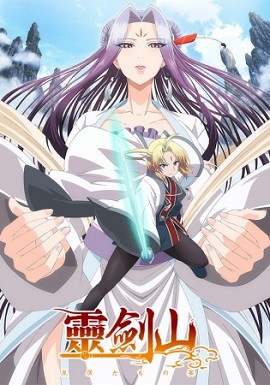 The DVD and Blu-ray market is still something interesting that we want to do because there are people who still want to see those anime on discs and own them. That's what we do with titles like Reikenzan. The DVD and Blu-ray market is still important, but the growth is on the Internet. The DVD and Blu-ray market is still something interesting that we want to do because there are people who still want to see those anime on discs and own them. That's what we do with titles like Reikenzan. The DVD and Blu-ray market is still important, but the growth is on the Internet.How did you come about partnering with Studio Deen for a work like Reikenzan? We work with a lot of other studios. We're not here to say that our studio will only create our own works. The idea is we are here to also help the market by investing other studio's anime works. Having your works animated in other studios is building that trust between your company and Japanese companies. That's very important for us to let other studios know that we are not here to take their market. We are here to help with them. We want to work together and follow the same strategy and philosophy. If Haoliners were to be known for something, what would you want it be? I would be happy if someone hears the name Haoliners and say, "Oh, you're the guys who did To Be Hero." To Be Hero is something that is very different from other works in the past. Even though it's a short anime, it has originality. If you like anime, you will definitely love To Be Hero because there are references which will make you remember other works. It's something that is for kids, but also for adults. I'm not young anymore. (Laughs.) Right now, I'm looking for something that's talking to me as an adult. Shounen titles are generally for young adults, so I don't find myself in that kind of anime anymore. That's why a series like To Be Hero is talking to me because I can understand those points of view. It was made by people who love anime just like me, and they know what to write. Original reporting by arsonal for MyAnimeList. Interview has been edited for clarity. |
mta_pnFeb 17, 2022 6:11 PM
Jun 22, 2017 9:13 AM
#2
We can see that it's also kind of difficult in other countries, whether it's the United States, Italy, or even Japan. Germany is the only market that is doing well in DVDs and Blu-rays. Their market is similar to Japan. Japanese publishers will put one or two episodes in one disc, so if you have a long series, you could end up with 20 discs. For the United States, I think that's false. FUNimation is not only the biggest anime distributor in North America but they also sell A LOT of Anime DVDs and Blu-Rays in North America. From Funimation said: Funimation generates more than $100 million in annual sales, with growth exceeding 10 percent a year since 2013, according to a spokesman. Because anime fans are collectors, Funimation has a growing DVD business. It's very surprising since it's the year 2017 where streaming is pretty much the norm these days and majority of the people (including me) would rather stream since it's more convenient. I do buy their Blu-Rays from time to time when one of their shows impressed me enough. My next buy-to list from Funi is, of course, Love Live Sunshine but as usual they like to take their sweet ass time :/ Now I want to know how much Funimation makes through subscription and merchandises. Source: https://www.bloomberg.com/news/articles/2017-05-04/-dragon-ball-importer-funimation-said-to-tempt-universal-sony https://www.forbes.com/sites/olliebarder/2017/05/05/sony-pictures-and-universal-are-interested-in-acquiring-funimation/#327c59b64a13 |
jc9622Jun 22, 2017 9:22 AM
Jun 22, 2017 9:17 AM
#3
| This was a pretty decent read though to be completely fair. Also, I might say this and maybe some people will just give a lot of shit for China but... I think they would be more consistent in the future, probably. Maybe, Idk. So far not much from their stuff at least recently has made me rage and at best I thought they were okay... there were some that I actually disliked so. |
Jun 22, 2017 9:27 AM
#4
| Hmm... I look forward to see more work based from novel in the future lol XD |
 I'm starting to get embarrassed by my own forum signature line.. XD |
Jun 22, 2017 9:35 AM
#5
jc9622 said: We can see that it's also kind of difficult in other countries, whether it's the United States, Italy, or even Japan. Germany is the only market that is doing well in DVDs and Blu-rays. Their market is similar to Japan. Japanese publishers will put one or two episodes in one disc, so if you have a long series, you could end up with 20 discs. For the United States, I think that's false. FUNimation is not only the biggest anime distributor in North America but they also sell A LOT of Anime DVDs and Blu-Rays in North America. You're not looking back far enough. The U.S. market today is not what it was in the heyday of the 2000s. In general, the disc market is not as big as it was back then, and this also applies to the anime industry. FUNimation used to release DVD sets the same way Japan did, and it inherited a lot of those titles when Geneon went under. Today, FUNimation has turned the business around by releasing series sets instead of episodic releases. See also: http://www.animenewsnetwork.com/feature/2012-03-07 |
Jun 22, 2017 9:53 AM
#6
arsonal said: Wow....thanks for that link. I wasn't aware that the US used to practice that type of business model as well. So basically, Japan is still stuck in the past and they don't want to adapt FUNimation's business model? FUNi's business model is clearly working considering that they make (on average?) at least (or over) $100 million annually just on disc sales alone even though anime is a niche medium on the West. jc9622 said: We can see that it's also kind of difficult in other countries, whether it's the United States, Italy, or even Japan. Germany is the only market that is doing well in DVDs and Blu-rays. Their market is similar to Japan. Japanese publishers will put one or two episodes in one disc, so if you have a long series, you could end up with 20 discs. For the United States, I think that's false. FUNimation is not only the biggest anime distributor in North America but they also sell A LOT of Anime DVDs and Blu-Rays in North America. You're not looking back far enough. The U.S. market today is not what it was in the heyday of the 2000s. In general, the disc market is not as big as it was back then, and this also applies to the anime industry. FUNimation used to release DVD sets the same way Japan did, and it inherited a lot of those titles when Geneon went under. Today, FUNimation has turned the business around by releasing series sets instead of episodic releases. See also: http://www.animenewsnetwork.com/feature/2012-03-07 I really hate that "$80 disc for 2-3 episodes" BS and as much as I want the Japanese Anime Industry to not decline, it's probably going to die (or China's going to take over) in the future if Japan doesn't think of a new and effective way to make money. |
Jun 22, 2017 10:01 AM
#7
| I much rather see Taiwanese productions over Chinese, someone in Taiwan needs to set up a studio in Japan and make some CGDCT. |
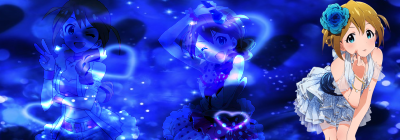 |
Jun 22, 2017 10:08 AM
#8
Hoppy said: I much rather see Taiwanese productions over Chinese, someone in Taiwan needs to set up a studio in Japan and make some CGDCT. pretty sure they already done.... but taiwanese animation is not allowed in mal IIRC... |
Jun 22, 2017 11:28 AM
#9
| The more anime they made, the more garbage we got, China sucks at story writing. |
| Do you play Azure Lane? Then please join my fanclub https://myanimelist.net/clubs.php?cid=74907 |
Jun 22, 2017 2:18 PM
#10
| DO NOT LET THE CHINESE TRICK YOU, JAPAN I repeat DO NOT LET THE CHINESE TRICK YOU |
 Nico- said: Conversations with people pinging/quoting me to argue about some old post I wrote years ago will not be entertained@Comic_Sans oh no y arnt ppl dieing i need more ppl dieing rly gud plot avansement jus liek tokyo ghoul if erbudy dies amirite |
Jun 22, 2017 8:55 PM
#13
Jun 22, 2017 11:24 PM
#14
| I'd think that china and its animation studios have had enough chances when it comes to making shows in the last 5 years and all of them sucked when it came to writing a good/original story, or creating good characters with memorable character designs with most of these shows outright sucking animation wise with the only quasi exceptions being the kings avatar (though i hate the way the action is directed and bad cgi integration) and to be hero with it having more wacky animation going on. unless some overhaul happens in Chinese animation or they adapt a manga that people give a shit about really well, there's really no point in paying attention to the shows they put out. |
Jun 23, 2017 1:12 AM
#15
| The horrifying beast responsible for the upcoming ruining of Centaur's Worries :[ |
 |
Jun 23, 2017 4:35 PM
#17
| I don't know those people nor those companies, but I ended up reading the whole article/interview (I'm even not used to read that much in English) and it was worth it. |
Jun 25, 2017 2:08 PM
#18
| Nice interview!! And I definitely recommend To Be Hero, it's a good series! |
Jun 25, 2017 8:08 PM
#19
| That's a really great interview! Now I can see a trajectory of Chinese market crossing Japanese one and make anime industry grow! |
Aug 8, 2017 6:52 AM
#20
| Haoliners is fine as long as their fox spirit matchmaker continue to have a high rating in China :/ The shows they air in Japan...need some improvement |
Mar 17, 2022 3:32 PM
#21
| Holy crap I really hope the PROC (China) doesn't take over anime. If you see the tensions between the Japanese people and Chinese people they are sure to change things to their liking in a bad way of censorship. Just imagine not being able to talk about problems in the real world just because of a dictatorship with Winnie the poo as the head of the country, oh wait isn't that what hololi- *Gunshot* I mean CCP forever! Long live the CPC I have only two kids and Taiwan should be taken over! |
Dec 11, 2022 1:46 AM
#22
| This individual it is definitely passionate about anime, which i can respect and appreciate. I can understand why he/she would feel an urgency in the desire to validate there industry in a way that will qualify. This is a very popular site which is unfortunately still in a mostly minorant genre that is highly selective. I don't believe it would be the easiest task to unite artistic medium from a multitude of locations that offer a variance in their legal and social structures. Once again, I do appreciate and respect this, however I have a desire to mention, that I would also be extremely disappointed if Japanese Anime ended up being infiltrated by Chinese to the degree that I start to become aware of it in the anime portion of productions that are written by, and are of Japanese origin. I suppose I will reluctantly offer Chinese Anime a bit more of a chance to prove that they can produce... I think many/most of us would prefer that this wasn't happening at all, however as this Artist mentioned in this article , this has already been a largely collaborative effort that has been happening respectively, for a long time now. Likely longer than many of us realize, so as much as I hate to say it, we may not have a choice. I would like to mention, that I do not agree with the statement that all Chinese writing is of poor quality and/or is bad. China has been contributing excellent art and literature for millennia, Like Japan, and as we all know, are of civilizations that originate among some of the most ancient. (ie) There have been some excellent Manga/Anime that have been adapted from Chinese novels and Ancient Tales. (I was born in North America and of Caucasian genealogy. i would like to believe that i have no real biases) |
More topics from this board
» Manga 'Ninja to Koroshiya no Futarigurashi' Gets AnimeVindstot - 2 hours ago |
4 |
by mshfqtny
»»
37 minutes ago |
|
» Light Novel 'Saikyou no Shienshoku "Wajutsushi" de Aru Ore wa Sekai Saikyou Clan wo Shitagaeru' Gets TV Anime in Fall 2024Vindstot - Apr 21 |
8 |
by modcarparking
»»
1 hour ago |
|
» Netflix Announces 'Garouden: The Way of the Lone Wolf' Anime for May 2024Hyperion_PS - Apr 21 |
11 |
by modcarparking
»»
2 hours ago |
|
» 'Arifureta Shokugyou de Sekai Saikyou' Season 3 Unveils Additional Cast, First PromoHyperion_PS - Apr 21 |
2 |
by BankaiGoku
»»
5 hours ago |
|
» TAAF 2024 Anime of the Year Winners AnnouncedSnow - Apr 19 |
10 |
by malvarez1
»»
8 hours ago |


 on
on